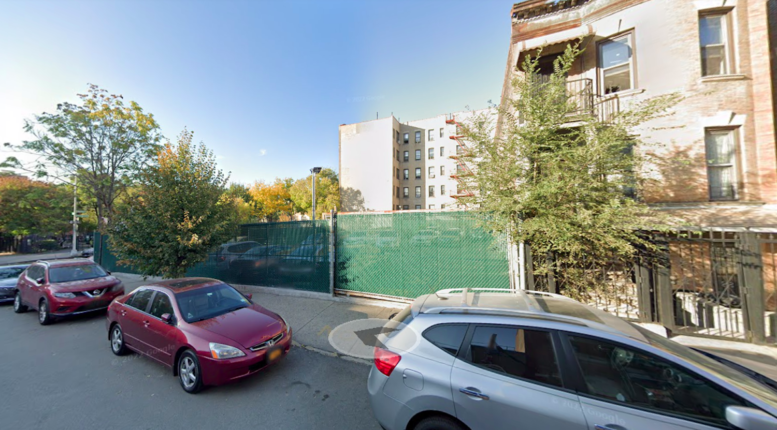
Winter Storm Warnings in Effect Throughout Central New York, Mid-Hudson, Mohawk Valley, North Country and Southern Tier Regions
Higher Elevations to See Heaviest Snowfall with Up to Foot of Snow for Parts of Central NY and Mid-Hudson Regions
Snowfall Rates of 1-2 Inches Per Hour Anticipated Through Tuesday Morning in the North Country
New Yorkers Urged to Prepare for Potential Downed Trees and Power Outages; Use Caution During Tuesday Commute
Governor Kathy Hochul today directed State agencies to prepare emergency response assets as a late-season winter storm system is expected to bring snow and rain to several parts of the state beginning Monday evening and continuing through Wednesday morning. Winter Storm Warnings for heavy snow are currently in effect across areas with higher elevations in the Central New York, Mid-Hudson, Mohawk Valley, North Country and Southern Tier regions, which includes the Catskills. These areas are expected to see the heaviest snowfall with up to a foot of heavy, wet snow expected in parts of Central New York and the Mid-Hudson regions, as well as potential snowfall rates of 1-2 inches per hour in the North Country. Given the potential impacts of this system, New Yorkers should prepare for potential downed tree limbs and power outages in the areas of the heaviest snowfall, even if surface accumulations are minimal. Governor Hochul is also urging New Yorkers to use caution during the Tuesday morning commute.
"As New Yorkers, we know all too well that Winter can last beyond March, and this week we're preparing for a storm expected to bring up to a foot of snow in some parts of the state, making for a messy commute on Tuesday," Governor Hochul said. "State agencies are ready to respond to this late season storm system and we are urging New Yorkers to keep an eye on the forecast for local impacts and take precautions if traveling on Tuesday."
Parts of Central New York and the Mid-Hudson regions are expected to see up to a foot of snow by Wednesday morning. The Mohawk Valley Region could see up to seven inches of snow, and a general 2-5 inches of snow is expected for parts of the North Country, the Southern Tier and Western New York. The Capital Region and Finger Lakes regions are expected to receive two inches or less of snow, and the New York City and Long Island regions are expected to receive a few inches of rain from the weather system. Downed tree limbs and power outages are possible in regions of heaviest snowfall, even if surface accumulations are minimal.
Multiple weather warnings, watches, and advisories have been issuedacross the state in advance of the winter weather system. For a complete listing of weather alerts and forecasts, visit the National Weather Service website at https://alerts.weather.gov.
New York State Division of Homeland Security and Emergency Services Commissioner Jackie Bray said, "Although we're more than halfway through April, snow is never out of the question in upstate New York. Our teams are fully prepared to handle this storm and will work with our local partners to make sure they have all the resources and support they need. While this storm isn't anything new for New Yorkers, we should all remain vigilant over the next 24 hours, check your local forecast, leave plenty of room Tuesday morning if you are traveling, and remember to check on friends and loved ones."
Safety Tips
Winter Travel
The leading cause of death and injuries during winter storms are transportation-related crashes. Before getting behind the wheel, make sure that your vehicle is clear of ice and snow; good vision is key to good driving. Plan your stops and keep more distance between cars. Be extra alert and remember that snowdrifts can hide smaller children. Always match your speed to the road and weather conditions.
It is important for motorists on all roads to note that snowplows travel at speeds up to 35 mph, which in many cases is lower than the posted speed limit, to ensure that salt being dispersed stays in the driving lanes and does not scatter off the roadways. Oftentimes on interstate highways, snowplows will operate side by side, as this is the most efficient and safe way to clear several lanes at one time.
Motorists and pedestrians should also keep in mind that snowplow drivers have limited lines of sight, and the size and weight of snowplows can make it very difficult to maneuver and stop quickly. Snow blowing from behind the plow can severely reduce visibility or cause whiteout conditions. Motorists should not attempt to pass snowplows or follow too closely. The safest place for motorists to drive is well behind the snowplows where the roadway is clear and salted.
Some of the most important tips for safe driving include:
- When winter storms strike, do not drive unless necessary.
- Use caution on bridges as ice can form quicker than on roads.
- Wet leaves on roadways can cause slippery conditions, making it important to drive at slower speeds when approaching patches of them.
- Make sure your car is stocked with blankets, a shovel, flashlight and extra batteries, extra warm clothing, set of tire chains, battery booster cables, quick-energy foods and brightly colored cloth to use as a distress flag.
- Keep your gas tank full to prevent gasoline freeze-up.
- If you have a cell phone or two-way radio available for your use, keep the battery charged and keep it with you whenever traveling. If you should become stranded, you will be able to call for help, advising rescuers of your location.
- Make sure someone knows your travel plans.
- While driving, keep vehicles clear of ice and snow.
- Plan stops and keep distance between cars. Always match your speed to the road and weather conditions.
For more safety tips, please visit the New York State Division of Homeland Security and Emergency Services website at https://www.dhses.ny.gov/safety.

